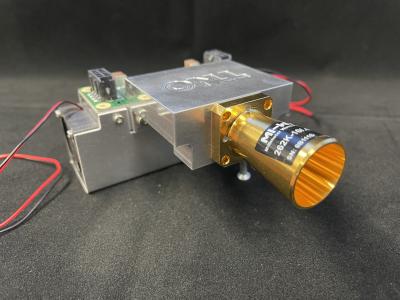Differential radiating front-end for DRA telecom applications in K-band.

To exploit the benefits of differential amplifiers in radiating front-end(s) for satellite downlink, focusing on high efficiency amplification and on low-loss interface strategies.
Direct Radiating Antenna arrays (DRAs) are an emerging solution to offer multiple beam, cellular-like coverage to satellite communication services, evolving to meet the demands for high data-rates, capacity and availability over a flexible area. A DRA array provides several advantages to the satellite: for downlink, an improved Equivalent Isotropically Radiated Power (EIRP), due to the smaller size of the beam; for uplink, an improved Gain-to-noise-Temperature (G/T). The multiple beam capability allows for frequency and polarization reuse, increasing the throughput for a given allocated bandwidth. Graceful degradation is assured, as a failure of a number of elements is not cause of the loss of the whole transmitting function. The beam forming is simplified, as implemented at low power level. The key element of this architecture is the high power amplifier (HPA) serving each radiating element. Recent developments push for the use of wide bandgap semiconductors, enabling for high power density devices and highly efficient MMIC (microwave monolithic integrated circuit) HPAs. The more the integration increases, the more transitions and interfaces have impact. In particular, the antenna feeding shall be kept as low-loss as possible, even passing through non-conventional impedances or differential design approaches to optimise the matching between the MMIC and the waveguide. The aim of this activity is to design, manufacture and test a differentially fed, highly efficient radiating front-end(s) for K-band satellite downlink, in a standalone unit, with an output power level in the range of 5W (37dBm). The activity shall focus on efficiency enhancement techniques at MMIC HPA level and shall provide solutions for a low-loss assembly of the radiating front end. The loss in the MMIC/waveguide interface shall not exceed 0.5dB: this allows an improvement on the overall efficiency of about 5 percentage points. Benefits of differential structures (better dynamic range, linearity, cross-polarization), shall be demonstrated at MMIC level and at radiating element level.This activity encompasses the following tasks:- Definition of specification of the radiating element and design of its building blocks (MMIC HPA and its interface).- Fabrication and integration of the front-end.- Test campaign to demonstrate the capabilities of the front-end.A technology roadmap shall be provided at the end of the activity
